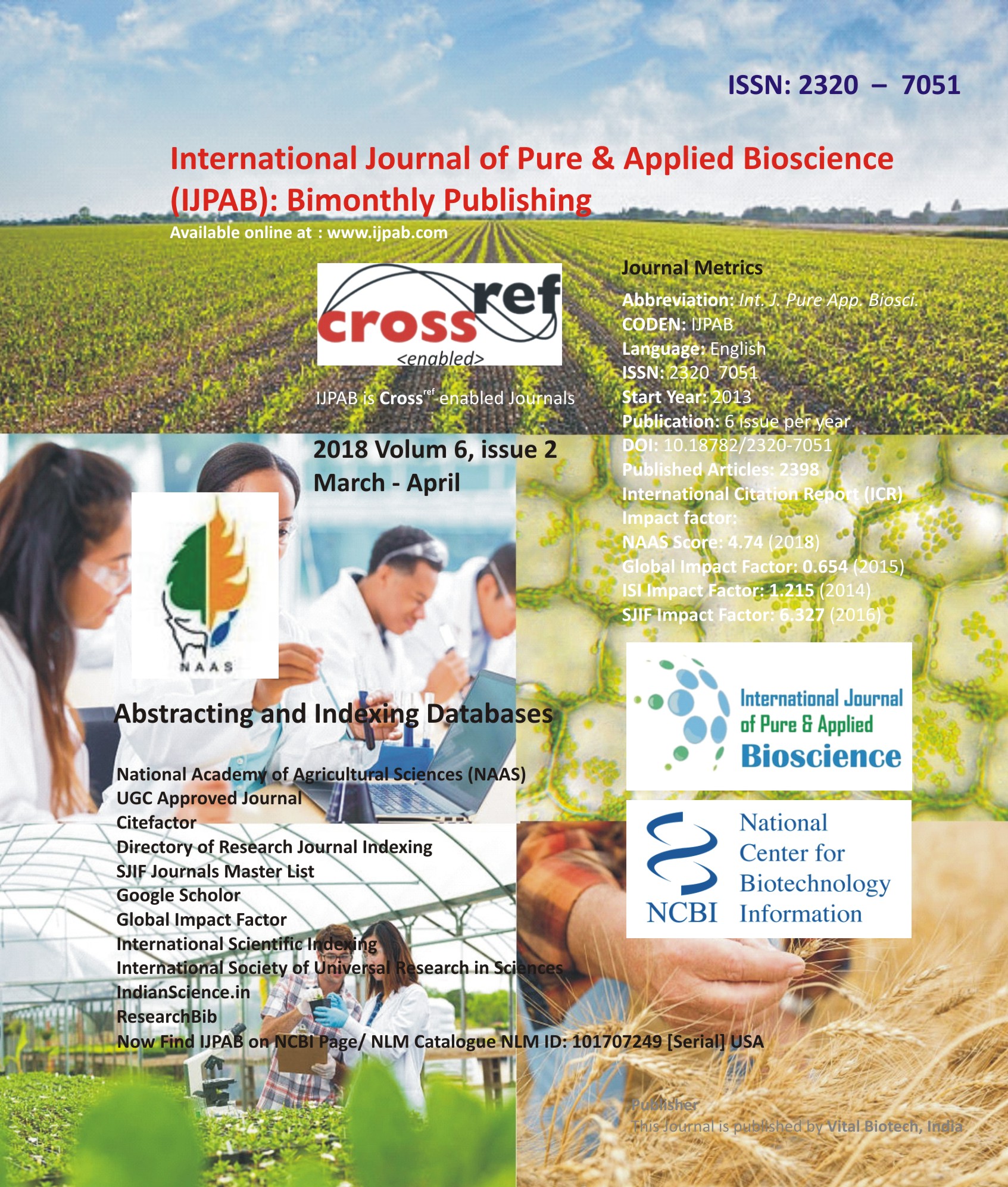
-
No. 772, Basant Vihar, Kota
Rajasthan-324009 India
-
Call Us On
+91 9784677044
-
Mail Us @
editor@ijpab.com
International Journal of Pure & Applied Bioscience (IJPAB)
Year : 2018, Volume : 6, Issue : 2
First page : (1640) Last page : (1647)
Article doi: : http://dx.doi.org/10.18782/2320-7051.6410
Effect of Amla Powder on Meat Composition and Carcass Traits in Broiler
Rajesh Dalal*, Virender Singh Panwar, Parveen Kumar Ahlawat, Bacchu Singh Tewatia and Nancy Sheoran
*Ph. D. Research Scholar, Department of Animal Nutrition,
Lala Lajpat Rai University of Veterinary and Animal Sciences, Hisar -125004 India
*Corresponding Author E-mail: rajeshdalal.rd@gmail.com
Received: 13.03.2018 | Revised: 22.04.2018 | Accepted: 26.04.2018
ABSTRACT
To study the effect of dietary supplementation of amla fruit powder on meat composition and carcass traits of broiler chicken meat, 300 commercial broiler chicks were randomly distributed into six treatments having five replicates consisting of ten birds each. The chicks fed with standard basal diet in two different growth phases i.e. starter (0-28d) and finisher (29-42 d). The first group was kept as control (T1) and given the basal diet without antibiotic, while second group (T2) was given basal diet with antibiotic. In third (T3), fourth (T4), fifth (T5) and sixth (T6) groups, basal diet was supplemented with amla fruit powder @ 0.25%, 0.50%, 0.75% and 1% respectively. The birds were weighed fortnightly to calculate performance parameters viz. feed intake, body weight change and FCR. Dressing percentage of different dietary treatments ranged from 76.35% (T2) to 77.35% (T5) and didn’t differ significantly between the supplemented and the control group and highest eviscerated percentage was obtained with supplementation of basal diet with 0.75% amla supplemented group (T5) but difference was non-significant with other groups. Drawn percentage of different dietary treatments ranged from 69.46 % (T1) to 70.26% (T4) and drawn percentage was significantly higher in T4 (basal diet supplemented with 0.50% amla powder). Under different dietary treatments giblet percentage was ranged between 4.11% (T1) to 4.77% and significantly (P<0.05) higher giblet percentage was obtained in dietary treatment T4 and T5. Abdominal fat percentage under different dietary treatments ranges from 1.08 % (T6) to 1.44% (T1) and groups supplemented with higher levels of amla fruit powder showed significant reduction in abdominal fat percentage. Moisture percentage and crude protein content of both breast and thigh muscle did not differ significantly among treated and control group while, fat percentage in both breast and thigh meat decreased significantly in amla supplemented group as compare to control group.
Key words: Abdominal fat, Amla, Drawn percentage, Dressing percentage, HypolipidemicFull Text : PDF; Journal doi : http://dx.doi.org/10.18782
Cite this article: Dalal, R., Panwar, V.S., Ahlawat, P.K., Tewatia, B.S. and Sheoran, N., Effect of Amla Powder on Meat Composition and Carcass Traits in Broiler, Int. J. Pure App. Biosci.6(2): 1640-1647 (2018). doi: http://dx.doi.org/10.18782/2320-7051.6410

